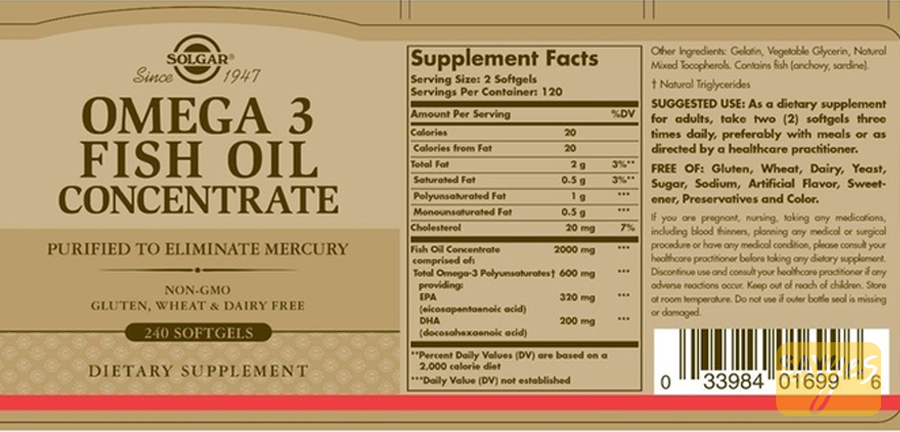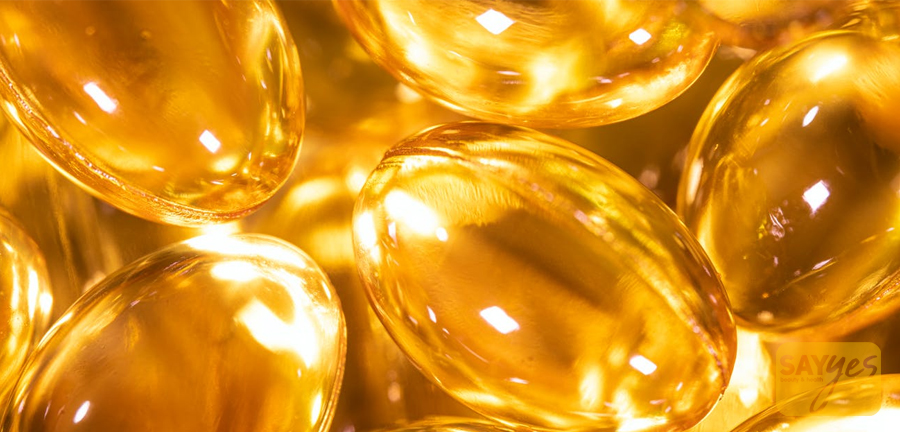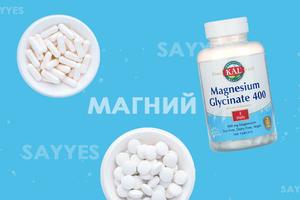
Recently, many articles have appeared about the benefits of fish oil and Omega-3 acids for the human body. However, it can be difficult for an ordinary person to understand this amount of information - the process takes a lot of time and effort.
It is difficult to dispute the relevance of the topic, so we decided to collect and analyze the most interesting materials for you. We will highlight useful information and help you understand the issue of taking nutritional supplements containing Omega-3 acids. So let's start in order.
How Fish Oil Becomes an Omega 3 Complex
- Initially, fish oil, which is extracted from the carcasses and liver of deep-sea ocean fish, is a mixture of triglycerides (this is a molecule of glycerol at the ends of which fatty acids. Since it has 3 ends, this is why it was called triglycerides). We know such a product simply as "Fish Oil".
- Further, omega 3 PUFAs are obtained from fish oil. With the help of well-known ethyl alcohol, fatty acids are separated from the mixture. The result is an ethyl ester of a fatty acid. In this form, Omega 3 acids are most often encapsulated and offered in complexes. In this case, the inscription Ethyl Esters can be found on the packaging.
- Since in the form of triglycerides Omega 3 acids are absorbed by the body a little more efficiently, some manufacturers of premium complexes, after receiving the ethyl ester of fatty acids, restore it again to the form of triglycerides, that is, as if returning the natural form. Such a process increases the cost of Omega-3 complexes.
Omega-3 is very important!Omega-3 fatty acids have been scientifically proven to be important for health and have a complex effect on the body. The main secret of Omega-3 PUFAs is polyunsaturated (healthy) fats, which inhibit the formation of cholesterol plaques and, accordingly, reduce the risk of developing cardiovascular diseases. It is important that they are not synthesized in the human body, but are regularly consumed, which is why they must come from external sources, mainly from food. |
The benefits of omega-3 fatty acids on body systems:
- Positive effect on the heart and blood vessels - reducing the risk of heart attack, stroke, lowering cholesterol and pressure, in general, cardiovascular diseases
- Increased regenerating functions of the skin - the skin ages more slowly and recovers better, looks younger and toned
- Protecting the skin from the sun, reducing allergic reactions and dermatitis
- Joint support – slowing down the process of cartilage destruction
- Anti-inflammatory function of the joints
- Improving brain activity - a positive effect on memory and attention, increasing efficiency
- Immune and circulatory system support
- Stimulation of reproductive function
- Reducing the risk of developing eye diseases, reducing the symptoms of dry eyes
- Positive effect in the treatment of depression
- Positive effect on the nervous system

Let's start choosing. Looking at DHA and EPA acids
There are many omega 3 fatty acids in nature, but the most important for the human body are EPA and DHA acids (this is how they are indicated on jars with the composition), therefore, when choosing an active complex, it is necessary to take into account their content in this product.
- EPA is eicosapentaenoic acid and DHA or DHA is docosahexaenoic acid. They are found only in fatty fish, most often in the carcasses of sardines, herring, salmon and mackerel.
- EPA and DHA acids are part of cell membranes, which means that the health of the whole organism depends on their required amount.
| ! | Our bodies contain different amounts of omega-3 acids. In complex systems, the content of useful acids is greater than in simple ones. Most DHA acids are found in the gray matter of the brain, retina, testicular tissues and sperm composition. Our brain is 30% polyunsaturated acids. |
Now it becomes clear why when choosing Omega 3 fatty acids, it is imperative to pay attention to the amount of EPA and DHA acids.
Popular mistake:
When shopping for omega 3s, most people look at the total amount of fish oil while looking at the DHA to EPA ratio. Many preparations contain no more than 30% of useful acids. If you compare different products with the same content of fish oil, it becomes clear that they have different amounts of DHA and EPA. Choose complexes that have at least 180 mg of EPA and 120 mg of DHA per 1000 mg of fish oil. The higher the fatty acid content, the greater the health benefits.
For example:

In this example, you can see that the total content of Fish Oil Concentrate is 2000 mg in 2 capsules (Serving size: 2 Softgels). So in 1 capsule 1000 mg of fish oil.
Beneficial EPA & DPA Per 2 Capsules:
-
EPA - 320 mg
-
DPA - 200 mg
Accordingly, the content in 1 capsule:
-
EPA - 160 mg
DPA - 100 mg
This is how the content of unsaturated fatty Omega 3 acids is indicated in the modern world. Always look at their quantity on the package. If their quantities are not indicated on the package, then the manufacturer does not want to focus on this, which means that there are very few of them.
In this case, the example chosen is not the Omega 3 complex, but fish oil, in which the content of these acids is also indicated.
Summarize. The highest content of EPA and DHA acids are arranged in descending order:
-
EPA + DHA complexes (most)
-
Omega 3 complexes (sufficient amount)
-
Fish oil (less)
Daily Omega 3
In the United States, there are no official norms for the consumption of Omega-3 acids, in some countries it is recommended to drink 300-500 mg DHA + EPA per day for prevention. For medicinal purposes, the dose can be increased to 1-2.5 grams. More than 3 grams of fatty acids should not be consumed. Children 2 years of age and older can take 250 mg of a mixture of EPA and DHA per day.
Some experts rely on the norms of the Scandinavian countries and believe that the dose of Omega-3 for children should be twice that of an adult (1100-1200 mg.).
Let's start choosing. Plant or Animal Omega-3
Many mistakenly believe that plant-based omega-3s are no different from animal-based omega-3s, but this is actually not the case.
Plant Omega is alpha-linolenic acid (ALA), which differs in composition and is absorbed in a completely different way, splitting into EPA and DHA after it enters the body.
Studies have shown that 70% of ALA cannot be converted in the body into the necessary EPA and DHA, so even with sufficient consumption of flaxseed oil, a positive effect is not observed.
ALA molecules (ALA) are unstable, they are easily oxidized under the influence of temperature and other external factors (light, air). To preserve the beneficial properties of linseed oil, it must be stored in the refrigerator in a dark container for no more than a month, while you must be sure that it has not oxidized during transportation or storage in a store.

Animal Omega 3 is better
Fish contains EPA and DHA in its finished form and is therefore the preferred source of these acids. It is believed that by consuming oily sea fish 2-3 times a week, you get the necessary portion of DHA and EPA acids.
And then there is Omega 6 and Omega 9. Why are they?

In addition to Omega-3 acids, there are also Omega-6 and 9. In the body, they are in a certain balance relative to each other, and the violation of this balance leads to systemic failures in the body and the occurrence of diseases. This is due to the fact that in recent years, the consumption of Omega-6 and 9 in the human diet has increased significantly, while Omega-3 has decreased.
As we have already said, Omega-3 consists of EPA acid, which has a powerful anti-inflammatory effect and reduces the risk of developing diseases of the heart, blood vessels, oncology and rheumatism, as well as DHA, which is responsible for the health and functioning of the brain.
- Omega-6 acids are also necessary for a full life and are not produced by our body. We get them from food, consuming vegetable oils (corn, sesame, peanut). An excess of Omega-6 provokes the development of the inflammatory process, so it is important to maintain a balance.
- Omega-9 acids are practically not required by our body and come with sunflower and olive oils, rapeseed, almonds and avocados. At the same time, consuming omega-9s instead of saturated fats helps lower cholesterol levels, reduce the risk of diabetes and heart disease.
It turns out that Omega 3 and Omega 6 acids have opposite effects (anti-inflammatory and inflammatory) and the displacement of their amounts relative to each other causes disturbances.
For prevention, it is better to take Omega 3, and Omega 6 is enough to take from food. Then the ratio will go into an increase in Omega 3 relative to Omega 6.
What fish is the fat from?
The best option is oily fish that lives in cold seas, it contains the maximum amount of Omega-3. For example, low-fat fish such as cod contains 12 times less omega-3 than Atlantic mackerel, so it does not provide the necessary portion of omega-3.
Interestingly, fish caught in the ocean contains more omega-3s than the same fish grown in artificial conditions. The ratio of Omega-3 and 6 is also much different, so farmed fish is not suitable for correcting the balance between these acids.
Eating 3-4 servings of oily quality marine fish per week will cover the body's need for beneficial acids, which is a good prevention of many diseases. However, it is desirable to consume "wild" Norwegian fish or salmon caught in Alaska for food - this is the cleanest and most useful source of polyunsaturated acids.
Taking omega polyunsaturated fatty acids in the form of nutritional supplements in modern conditions is a cheaper and safer way to replenish omega-3 acids. Choose preparations from ocean oily fish (sardines or anchovies), they have the maximum amount of unsaturated fatty acids and the minimum amount of pollutants.
| ! | Made in the USA, fish oils are tested for 32 contaminants to assure consumers that the product is safe. It is preferable to buy fish oils that have passed international tests for heavy metals and other contaminants. Information about this is usually indicated on the label or on the manufacturer's website. |
Helpful moment. Molecular form
There are two main forms of Omega-3 acids that are sold in our pharmacies - triglycerides and ethyl ester. This information is difficult to find on the packaging, but it is important to know about its existence.
Triglycerides - a natural form of Omega-3 acids, including fish oil, are best absorbed in the body. Fish oil is always in the form of triglycerides.
Fatty acid ethyl ester is a form in which omega-3 acids are separated from the rest of the components from fish oil. In this form, fatty acids can be purified from impurities and concentrated. The advantage of such preparations is thorough cleaning, and the disadvantage is somewhat less digestibility.
It should be noted that all studies on the effectiveness and benefits of Omega 3 acids were carried out with ethyl ester of fatty acids. Yes, triglycerides are better absorbed, but in the long run, if you take omega-3 complexes on a regular basis, the effect is the same!
| ! | Conducted scientific studies of the bioavailability of drugs of different molecular forms. Triglycerides reach body tissues much faster and are considered more effective in the short term. Ethyl esters require from 8 to 12 weeks for a stable effect to appear from the reception, otherwise they are no less useful and effective, but at the same time much more economical. |
Capsules or liquid form

The most commonly sold nutritional supplements of omega polyunsaturated fatty acids are in the form of a capsule - this is the most convenient option. The advantage of capsules is that they are easy to swallow and do not have a fishy taste. Fish oil is protected from exposure to light and air, and this allows you to keep its medicinal qualities longer. Most manufacturers offer a special shell that dissolves not in the stomach, but in the intestines, which helps to avoid fish burping.
The most common source of Omega-3s is cod liver oil, and these complexes are usually sold in liquid form. Fish oil is packaged in glass or plastic tinted bottles that must be kept in the refrigerator. Liquid fish oil quickly oxidizes and loses its healing properties, so the jar should not be left open. Often, manufacturers protect liquid fish oils from oxidation with an inert gas. For children, fruit-flavored fish oil is produced.
Children's omega-3 supplements have recently come in the form of fruit-flavored gelatin capsules, as well as jelly bears and other funny animals. The advantage of gummies in a small size, suitable for babies, and a bright taste that kills the taste of fish.
Side effects of taking fish oil
If you are not allergic to fish or shellfish, you most likely will not have any reaction to fish oil. Some people may have side effects from taking fish oil, but this does not mean they are allergic.
However, the use of large doses of fish oil, more than 5000 mg per day, can lead to undesirable consequences and harm the body.
1. High blood sugar
Taking high doses of omega-3 fatty acids can stimulate glucose production, which can lead to high blood sugar levels, although the scientific evidence is not conclusive. And some studies show that daily doses of up to 3.9 grams of EPA and 3.7 grams of DHA — the two main forms of omega-3 fatty acids — do not affect blood sugar levels for individuals with type 2 diabetes.
2. Bleeding from the nose
Taking large amounts of fish oil may prevent blood clots from forming, which can increase your risk of bleeding and cause symptoms such as nosebleeds or bleeding gums. One study in 56 people found that supplementing with 640 mg of fish oil per day over a four-week period reduced blood clotting in healthy adults.
3. Low blood pressure
Fish oil's ability to lower blood pressure has been documented in several studies, and while these effects can certainly be beneficial for people with high blood pressure, they can cause serious problems for those with low blood pressure. Therefore, if you have a problem with blood pressure, taking omega-3 supplements should be discussed with your healthcare provider.
4. Acid reflux
Fish oil is high in fat and can cause acid reflux symptoms such as belching, nausea, indigestion, and heartburn in some people.
In this case, it is necessary to reduce the dosage and break it down into several doses throughout the day, as well as take the supplement after meals, avoiding the use on an empty stomach.
It is considered safe to use up to 5000 mg of omega-3 fatty acids per day. If you have any negative symptoms, reduce your intake of supplements and try to get omega-3 fatty acids and food sources by adding foods containing them to your diet daily.

Sources:
1. https://health.gov/our-work/food-nutrition/previous-dietary-guidelines/2015
2. https://www.ncbi.nlm.nih.gov/pmc/articles/PMC4223119/
3. https://pubmed.ncbi.nlm.nih.gov/8339414/
Date of publication of the article 27.06.2022
 |
Review author and fact-checking Artyom Rusev, |














































































